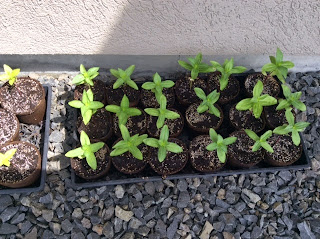During a recent trip to the west side of the mountains in
Washington State, I was treated with many sightings of blooming rhododendrons. These giant of flowers are very impressive
when in full bloom! I live on the east side of the mountains where there are
few growing because the conditions are not optimal.
Here are a few little-known
facts.
Fibrous Root Ball
Rhododendrons have shallow, fibrous or hair-like roots. They cannot tolerate dry, hot
conditions. Because of this, they grow more successfully on the cooler, wetter
west side of Washington State where I was visiting. During the first year after
planting, they need plenty of water. It
takes longer for the small root hairs to grow out of the original root ball. Because
of the shallow roots, cultivating is not recommended. A thick layer of mulch
provides lots of root protection.
Invasive
Some varieties of Rhododendrons are invasive in certain parts
of the world. An invasive plant is any
plant that is, “not native and has negative effects on the economy, the
environment, or health. “ This is true for a cultivar of rhododendrons that is
commonly found throughout the British Isles and other parts of the world. Rhododendrons
thrive in mild, moist climates with slightly acidic soils. In these areas,
rhododendron plants have been found to destroy habitats of other plants and
animals because of their aggressive growing habits.
Fragrance
Most people are unaware that there are a few varieties of
rhododendrons that have fragrance. Plant breeders have managed to develop other
cultivars that have fragrance too. The flowers of these aromatic blooms tend to
be lighter in color; for example, white, light pink or light yellow. The
strength of the perfume of any flower is made stronger with warmer
temperatures.
Have you grown rhododendrons successfully in your area?








